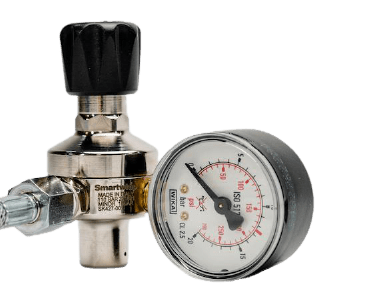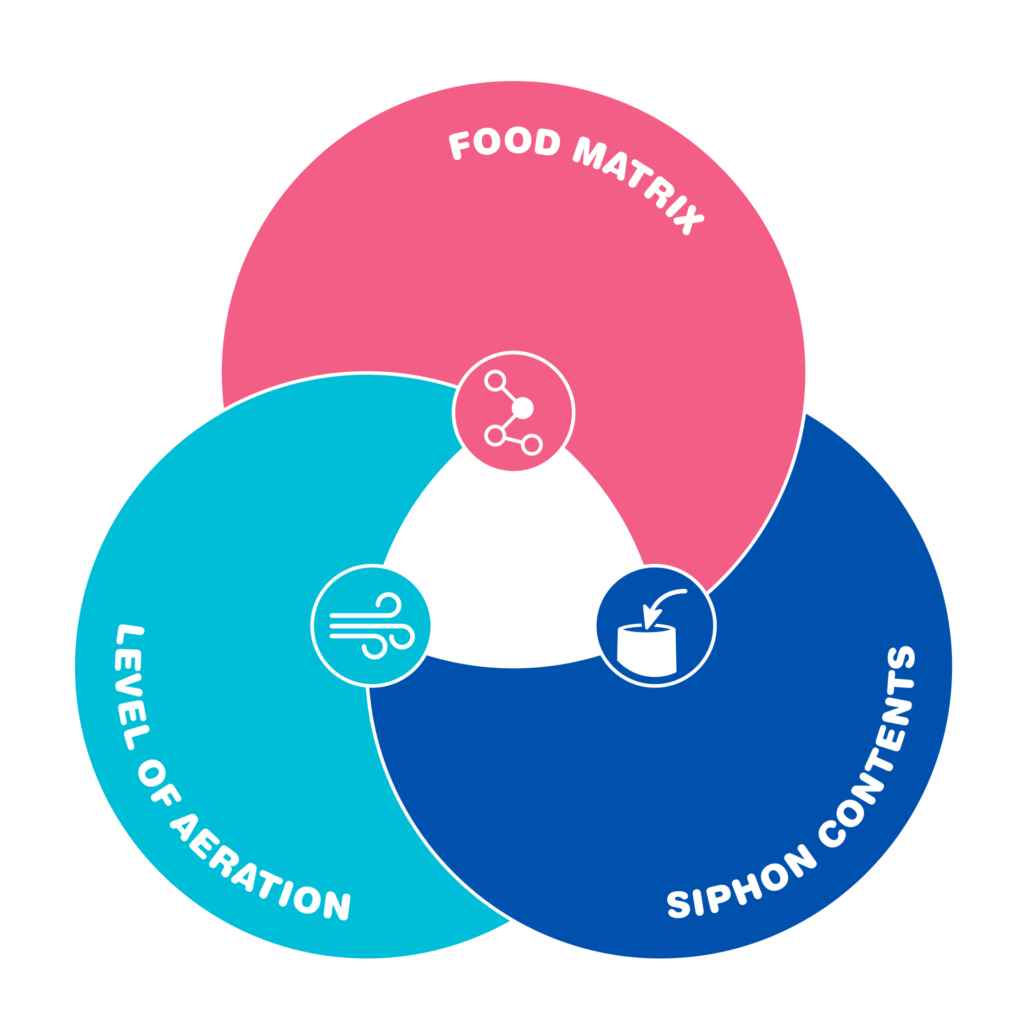

Smartwhip Pressure Table
Know exactly which pressure to use for the best results of any dish, infusion or drink

1. The Food Matrix
The food matrix considers the molecular relationship between the fats, proteins and sugars present in a recipe. Fat and protein are essential for stabilising a foam and ensuring the air bubbles remain intact. The higher the proportion of these components in the recipe, the more pressure is required to aerate them and achieve a stable foam structure.
Nitrous oxide dissolves well in fatty substances, meaning your recipe requires fat for the gas to dissolve in and aerate it. The higher the fat content, the denser your liquid is and the more pressure it requires to become aerated.
To stabilise the foam, you also need a protein, which will form a sort of net around the air bubbles and keep them from bursting.
Each flavouring element in a recipe will all affect a foam’s structure differently, depending on their density and water content. Denser contents require more pressure while ingredients with a high water content might require more protein to froth up.
2. The Siphon Contents
The amount of gas (in other words, pressure) required for each recipe is proportionate to the amount of free space in the siphon. The lower the contents, and the more free space there is in the chamber, the more nitrous oxide gas the recipe requires to fully penetrate the ingredients.
3. The Desired Level Of Aeration
As a general rule of thumb, the higher the pressure (in other words, the more gas you use), the firmer and more voluminous the resulting foam will be. It therefore depends on how voluminous and intense you want your recipe to become as the airier the foam is, the less concentrated the flavour is.
Foam pressure table
| Type of foam & level of foam density | Siphon contents | Recommended pressure (bar) |
| Soft and airy foam | 300-450 ml | 6-9 |
| Thick foam | 300-450 ml | 9-11 |
| Foam for cocktails | 200-400 ml | 8-11 |
| Runny foam (e.g. soup) | 300-450 ml | 5-7 |
| Firm foam (e.g. cakes & merengue) | 200-250 ml | 15-16 |
Rapid infusions and marinades pressure table
| Level of intensity | Siphon contents | Recommended pressure (bar) | Recommended infusion time |
| Low | 10-150 ml | 5-7 | 15 minutes |
| Medium | 150-250 ml | 7-13 | 30 minutes |
| High | 250-500 ml | 8-17 | 2 hours |
Proteins and binding agents that are suitable for producing foams
- Egg whites (albumin)
- Potato starch
- Xanthan gum (E 401)
- Agar (E 406)
- Sodium alginate (E 401)
- Carrageenan (E 407)
- Cellulose gum (E 466)
- Gelatin (sheets, powder or granules)
- Methylcellulose (E 461)
- Soy lecithin (E 322)
- Microcrystaline cellulose (E 460)
- Locust bean gum (E 410)
- Guar gum (E 412)
- Vegetable protein (soy, chickpeas)
